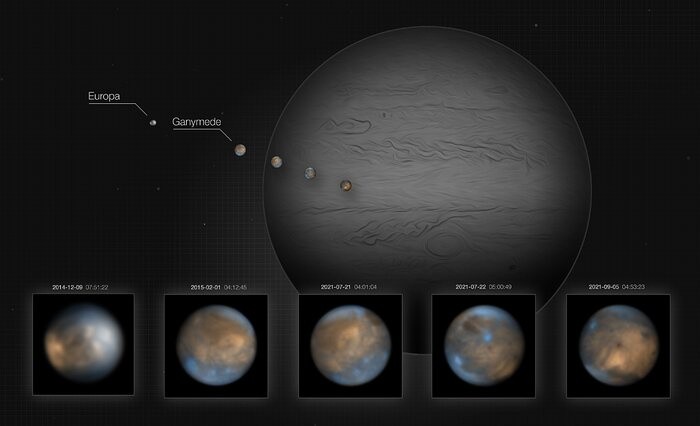Lo and behold!
Astronomers have recently unveiled what might be the most detailed photographs of two of Jupiter's iconic moons taken from Earth's surface, according to a report by Space.com.

Jupiter's Galilean Moons
The images highlight the icy surfaces and specifics of the processes that make up the chemical composition of Europa and Ganymede - half of Jupiter's four Galilean moons, which were named after the astronomers who observed them first.
The new photographs, which were taken by the Very Large Telescope (VLT) in Chile, are intended to establish the framework for upcoming space missions that will focus on these planets, according to scientists.
The extremely precise views show the geological characteristics of the two frozen Jovian moons, such as a long, rift-like slash that spans Europa's surface, which is referred to by planetary scientists as a "linae."
The quantity of sunlight reflected from the icy surfaces of the moons is measured in studies of Europa, which is around the size of the Earth's moon, and Ganymede, the largest moon in the solar system and bigger than Mercury.
Astronomers can use a procedure known as spectroscopy to study the reflectance spectrum created by this observation and disclose the chemical "fingerprints" of particular components, as per Space.com.
Scientists were able to identify the chemical composition of both Jovian moons using these reflectance spectra.
Europa and Ganymede
The investigation of Europa revealed that its surface is covered in a range of various salts that reflectance spectroscopy was unable to distinguish and that its crust is mostly made up of frozen water ice.
The team's scans of Ganymede showed two different types of topography spread across the moon's surface. Compared to much older parts, which are composed of a dark grey substance that the team has not yet been able to identify, younger portions were defined by substantial concentrations of water ice.
The icy parts of Ganymede, which appear as blue spots in the VLT image, highlight its polar ice caps and craters where recent asteroid impacts have uncovered the ice that makes up the Galilean moon's crust.
The photos were also used by team leader Oliver King and his associates to map the distribution of various salts over Ganymede's surface as well as the size of ice grains across its surface.
"The VLT has allowed us to carry out detailed mapping of Europa and Ganymede, observing features on their surfaces smaller than 150 kilometers across - all at distances over 600 million kilometers from the Earth," King said in a statement.
"Mapping at this fine scale was previously only possible by sending spacecraft all the way to Jupiter to observe the moons up close."
Related Article : ESO's VLT Captures a Dreamlike Galaxy With Two Supermassive Black Holes At the Center
This article is owned by Tech Times
Written by Joaquin Victor Tacla
ⓒ 2025 TECHTIMES.com All rights reserved. Do not reproduce without permission.




